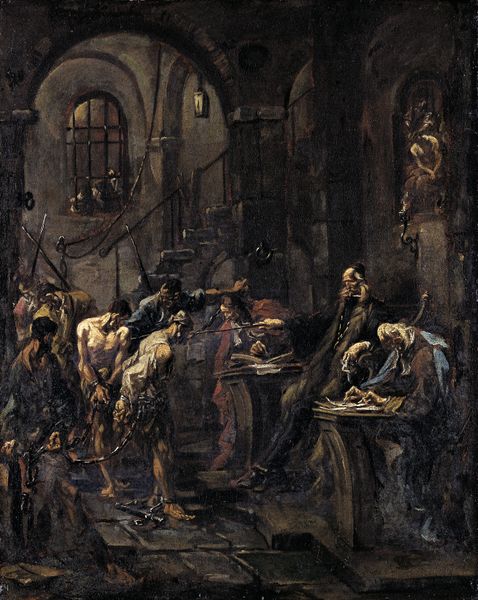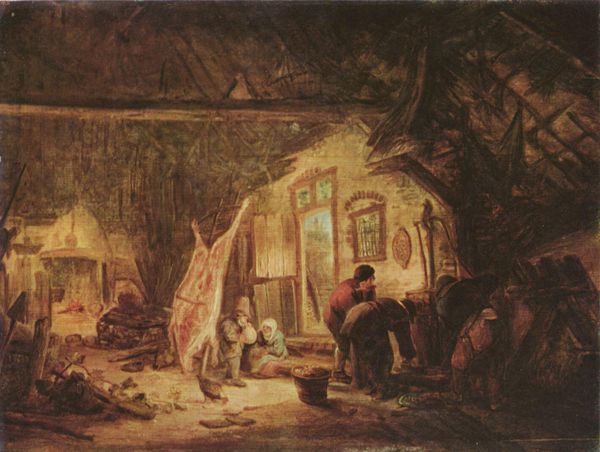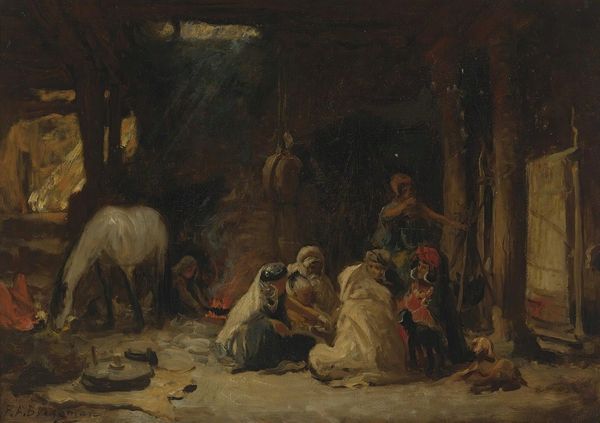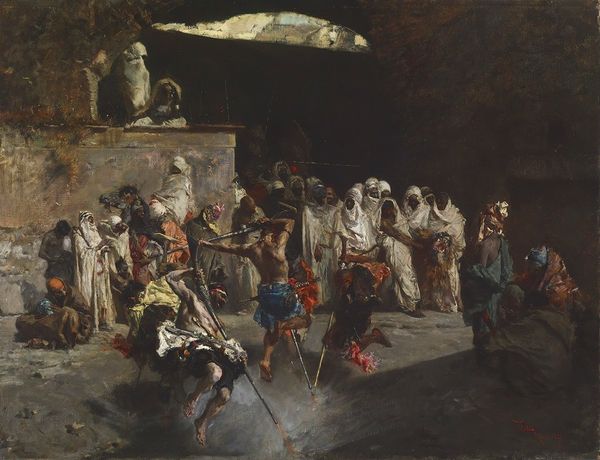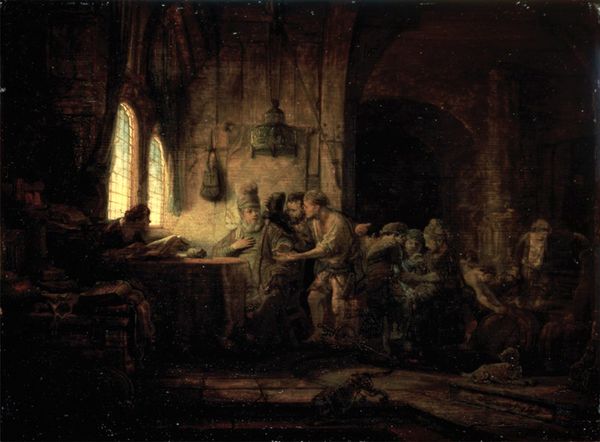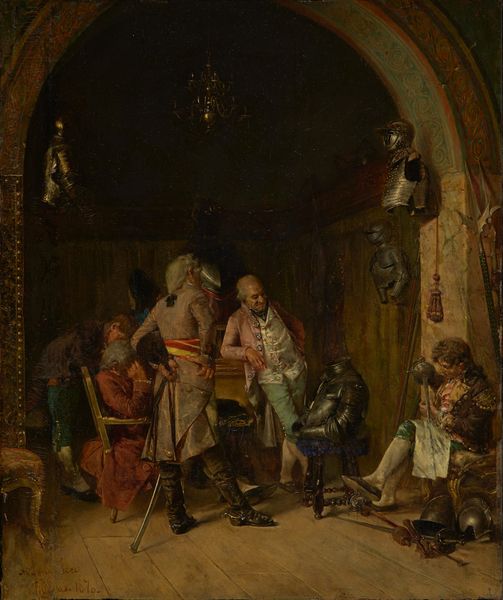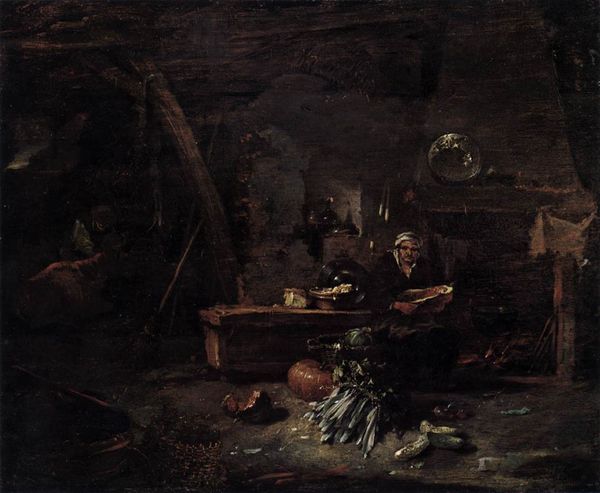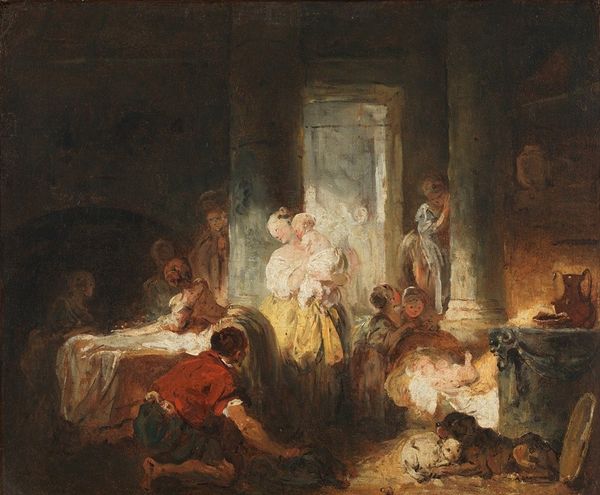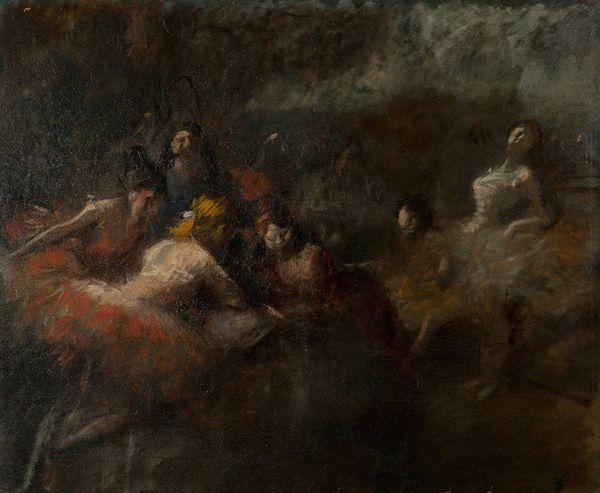
painting, oil-paint
#
painting
#
oil-paint
#
figuration
#
oil painting
#
group-portraits
#
romanticism
#
orientalism
#
genre-painting
#
history-painting
Copyright: Public domain
Curator: Look at this oil on canvas; it’s Alexandre-Gabriel Decamps’ “Interior of a Turkish Cafe,” painted in 1833. It hangs here at The Phillips Collection. What strikes you about it? Editor: Intriguing...Immediately I'm hit by the sense of shadows, figures lurking, and almost secretive encounters. It's very dark but with these potent shafts of light piercing the gloom. The mood feels…laden. Curator: Absolutely. Decamps, while working in the Romantic style and dabbling in history painting, was also deeply entrenched in Orientalism, as was fashionable back then. These depictions, though often romanticized, can tell us a lot about cultural perceptions, wouldn't you agree? Editor: Undeniably. What's striking about Decamps' approach, compared to many others, is that he leans away from sheer exotic fantasy toward a deeper, moodier realism, it almost feels documentary, a little gritty if I dare say. These figures are not idealized. Curator: True, it’s as if he wants us to really "feel" the atmosphere— the dimness, the quiet intensity of the space. What's potent for me is the use of light almost like a spotlight to stage drama, while figures remain cloaked and in their own sphere of thought, revealing this delicate balance between observation and cultural fascination. There is a feeling of the uncanny... Editor: Yes, the interplay of light and shadow isn't just dramatic. Look how it seems to almost obscure some faces while revealing tiny details like the textiles or expressions. This has the feeling almost like a theater stage. A certain sense of anticipation is there. One feels like a silent intruder who glimpses at the unknown and untold. Curator: Decamps masterfully draws us into a world steeped in his own perception and experiences—as the artwork is called "Interior of a Turkish Cafe." What would we call that space today? Would we call it the "same"? What shifts within ourselves when we examine depictions such as these through the scope of culture today? Editor: A very timely and necessary question. Looking at "Interior of a Turkish Cafe" again through modern lenses—the visual vocabulary invites to a deeper reading where cultural representation is charged with so many layered views and opinions. I feel this discussion in itself invites people to explore what symbols communicate today.
Comments
No comments
Be the first to comment and join the conversation on the ultimate creative platform.
